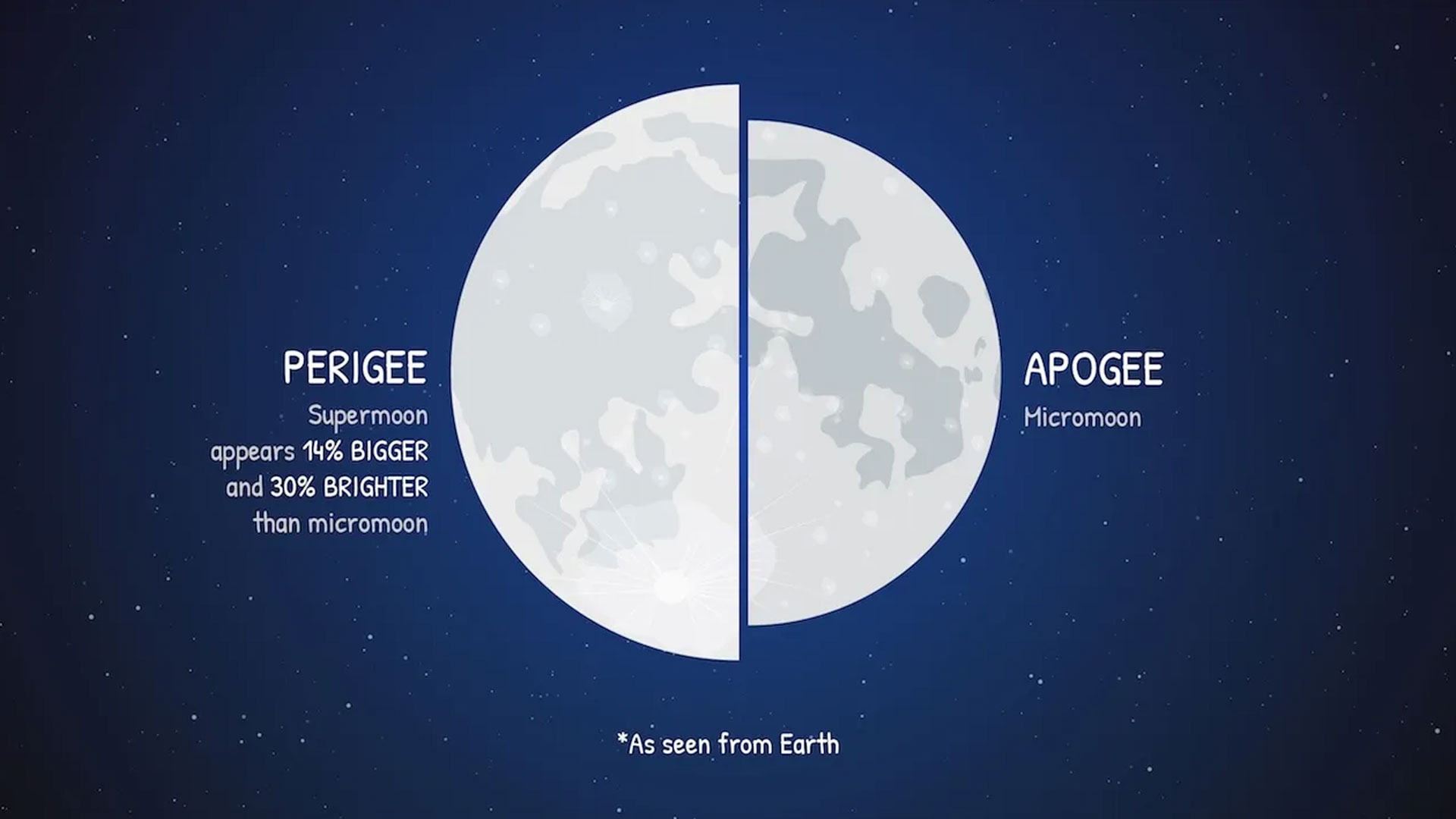 This graphic shows the difference in the appearance of the Moon’s size in its furthest and closest distances to Earth.
This graphic shows the difference in the appearance of the Moon’s size in its furthest and closest distances to Earth.
Skygazers across the U.S. on Friday will have one last chance to catch a glimpse of a supermoon before the year ends.
November's full moon, called the Beaver Moon, will appear larger and brighter than a regular full moon. The moon, which NASA says will rise at 4:29 p.m. ET Friday, is the fourth supermoon in a row since August. The supermoon's rise and set time will shift some based on the viewer's location, according to Christopher Palma, teaching professor and adviser of the Department of Astronomy and Astrophysics at Penn State University.
"For Central PA, where I am, the moon rises at 4:29 p.m. on Nov. 15, and it sets the next morning at 8:04 a.m., so it's visible for about 15 ½ hours. For the DC area, the times only change by a few minutes," Palma says.
The moon is considered "super" when it is full and its orbit is at the closest point to Earth, according to NASA — though the term "supermoon" is not official. Its occurrence can cause tides to be higher than normal, the agency says. The celestial phenomenon happens three to four times a year — in a cluster, or back-to-back full moons.
November's supermoon will appear full for nearly three days starting Thursday morning through sunrise Sunday morning, NASA says. No special equipment is needed to see it but the best views will depend on the weather.
"I am definitely in favor of having everyone observe the moon, and when it does appear at its largest when it is full, that is the easiest time to observe it," Palma says, adding that people should use a moon map to identify features on the lunar surface. "One place to start is to look for the crater Tycho."
The crater is thought to be one of the youngest and most prominent craters on the moon and can be seen as a bright spot on its surface in the lower hemisphere, NASA says.
If you miss this supermoon, you won't be able to see the next one until October 2025, Palma says. At that time, there will be three supermoons in a row.

By submitting your comments, you hereby give AZPM the right to post your comments and potentially use them in any other form of media operated by this institution.